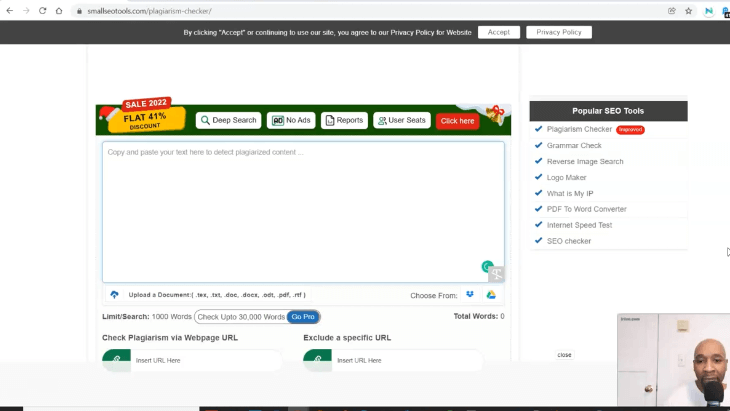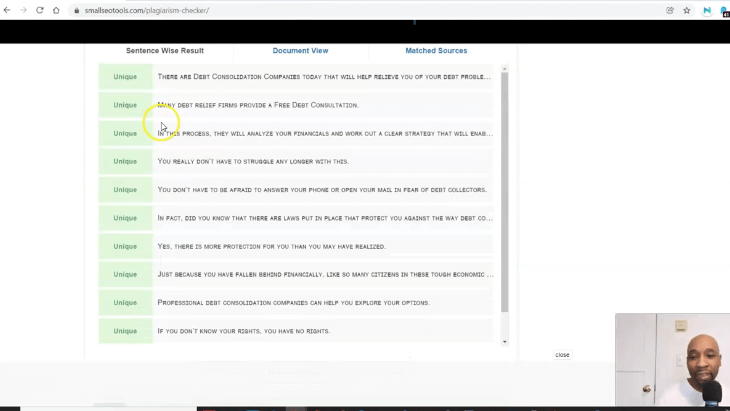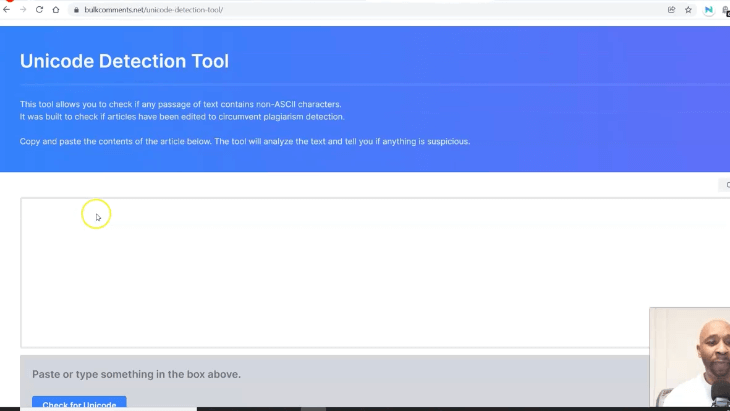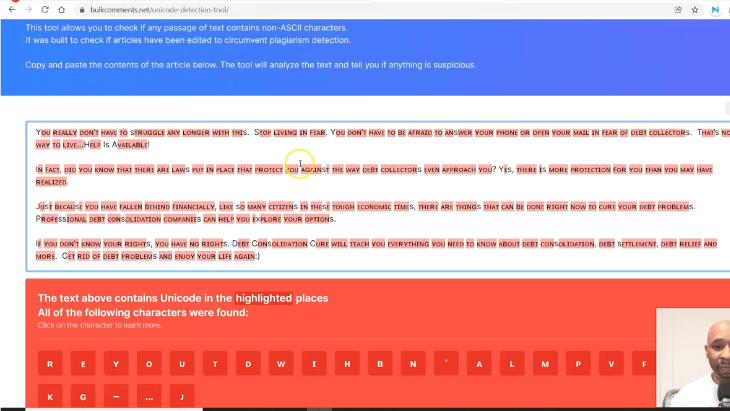A Standard Plagiarism Checker – Duplicate Content Detector is just not enough these days.
Hello, this is a public service announcement.
If you routinely buy articles or blog posts on the web, then you probably already know to always use a plagiarism checker to check for duplicate content.
But today, I’m going to tell you about another threat that’s been floating around the web, one that you may have never even realized, and one that may pose an even greater threat than just mere duplicate content.
There’s crooks out there on the web, that may be trying to sell you fake content, and pass it off as real content.
And I’ve heard about a lot of people falling, several people falling victim of this scam.
So today, I’m going to blow the lid off on it right here right now, so that hopefully you won’t get got!
OK, let’s start right now.
So I just pasted some real text into the box from a sample site.
Then we’re going to take it over to a duplicate content checker.
First Plagiarism Checker Tool
Today, I’m using Plagium free plagiarism checker.
Okay, as you can see, it’s clearly detected and confirmed that this is duplicate content.

Now we’ll go over to another tool.
This is called a YayText. it’s a tool that transforms regular text into Unicode.

And without getting too technical, Unicode is it’s just a coding language, that just it’s just mimicking the text.
It just looks like real text, but it actually is just symbols.
So let’s paste the text into the box.
Now it’s transformed into Unicode.
You see, Unicode comes in different designs and things like that.
So let’s scroll down and try to find one that looks real, like real text with no underlines, and things like that.
Okay, here’s one.

So let’s copy it.
Now, let’s go back over to our duplicate content checker tool.
Okay.
Do another check, let’s delete this real text out of the box, put the Unicode text in there.
So let’s push this Quick Search button again.
And see what plagiarism checker comes up with now.
Look, Plagium did not find documents making use of the text that you entered.

That’s because it thinks that it’s real text because it can’t detect it as fake content.
It’s basically saying I’m good to go.
Second Plagiarism Checker Tool
Now what I’m going to do is take you to another plagiarism checker from smallseotools.

We’ll paste in the same text.
And we’re gonna let it check for plagiarism.
And as you can see, this tool reported that it’s unique content too.

But as we know, it’s fake content, FAKE, FAKE, FAKE, FAKE, FAKE!!!
I’ve done this test in varying plagiarism checker tools.
And although things can vary in their reporting of the Unicode to different degrees, somebody picked it up a little bit, and some may not depending on which Unicode was used.
But none of them can detect this Unicode 100% thoroughly at all.
So this is just another scam that you need to watch out for.
And also, another thing I’ll mention, too, is that some tools even may pick it up and not even be able to read it. In this case, they’ll usually show a message saying something like “we can’t read the content”.
So that’s another sign that you’ve been duped with Unicode content.
The Okey-doke!
So how do you protect yourself from this Unicode scam?
How? I’m going to tell you how!
Unicode Detection Tool – Crucial Step!
We’re going to go over to another tool which is a Unicode Detector by BulkComments.

And this tool will detect if your article or blog post content has Unicode, and it will highlight in red flag it all over the place.
So let’s paste that fake content into the box.
As you can see, it’s flagging it red all over the place.

Fake Fake, Fake, Fake, Fake!!!
Now I want to say you want to ignore things like symbols and punctuation because sometimes the tool will highlight those because those are characters. But I’m talking about the letters.
If you see that it’s highlighting the letters and stuff all over the place, then it’s fake content.
Okay, so let’s recap.
And so the way you want to protect yourself from this duplicate content scam is when you’re buying articles and blog posts on the web, as soon as you get it back always remember to take these 2 important steps so that you can not those scammers out with a one-two punch!
1.) You want to always check it first – not through your standard duplicate content checking tool – but you want to first check to see if there’s even real content. So you go to this site which is a Unicode detection tool.
2.) And then from there, once you have established that it’s real content, then you can check it for duplicate content in your standard duplicate content checking tools like Plagium, Copyscape, and so on.
Doing this will save you from a lot of time, money & headaches – including possible legal troubles or website penalization.
Okay, so hopefully you’ve learned something today from this plagiarism checker comparison and warning.
I hope it saves you and protects you.
This is Rich B. signing off, be well.
